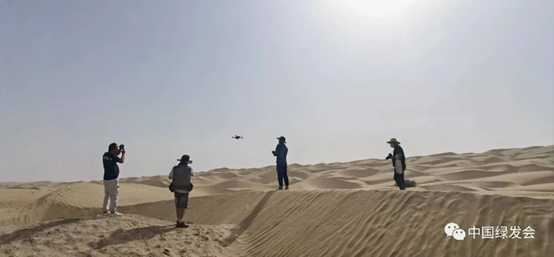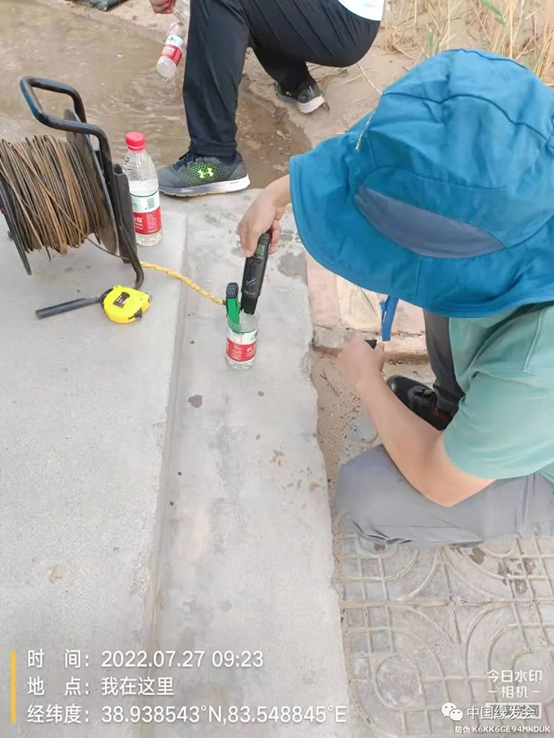On July 25, the Lop Nur scientific expedition team composed of experts from the comprehensive hydrology team, the plant team and the geological environment team set off from Beijing, Shijiazhuang, Qinghai and other places to meet in Korla, Xinjiang. Organized by the China Biodiversity Conservation and Green Development Foundation(CBCGDF) in 2022, the scientific expedition(Phase 3) to Lop Nur and surrounding areas was launched.
In 2020 and 2021, CBCGDF organized experts in the fields of ecology, hydrology, biology, soil, etc. to go deep into Lop Nur and its surrounding areas, where the experts inspected the three main supply rivers of Lop Nur, the Peacock River, the Tarim River and the Qarqan River Basin. A series of stage investigation results have been obtained on hydrological changes, the distribution of wild terrestrial animal and plant species, the distribution of aquatic organisms, and soil types and distribution characteristics, which have laid a solid foundation for later investigations and comprehensive analysis research.
At 7:30 on July 27, CBCGDF’s scientific expedition team to Lop Nur consisting of experts from the Integrated Hydrology Group, the Plant Group and the Geological Environment Group set off from Tazhong Town and continued along the desert road.

The water in the Lop Nur area is mainly endowed with the pore water of the loose rocks of the Fourth Series, with the structural characteristics of overlying diving and underlying multi-layer pressurized water, and mainly receives lateral runoff recharge from the bedrock fracture water in the surrounding mountains. Groundwater runoff speed in different fracture zone varies. Therefore, the geological environmental group conducted groundwater statistic measurements, on-site physical and chemical index tests and water sample collection at certain intervals, with a view to systematically analyzing the hydrological characteristics and chemical composition of groundwater in the area and providing an important basis for studying the hydrogeochemical background characteristics and environmental evolution of the area.


According to the results of the two previous surveys, there are 74 species of seed plants in 27 families and 53 genera in Lop Nur and its surrounding areas, including 2 species of cultivated plants and 7 species of protected plants at the provincial level. The living type is absolutely dominated by herbaceous plants, and woody plants are mainly shrubs, with very few tree species. The region has the most species of Quinoa and Gramineae, and a larger proportion of monocotyledonous families and monocotyledonous genera. The main community types in this area are poplar forest community, multi-stemmed tamarisk scrub, reed community, flowering firewood community, black-fruited Chinese wolfberry community, bell thorn scrub community, camel thorn community, and sand date community, etc. The species richness and diversity index of these communities are low, simple in structure, and single in species composition. To further analyze the structural characteristics of plant communities and the evolutionary trends, the plant group conducted a continuation survey of plants near the interval sites.
The integrated hydrology group, on the other hand, examined the Nia River section of the river and measured that the average flow velocity of the river section was 0.25m per second. The Nia River is a typical river in China's extreme arid zone, with its source in the glacial snow belt at an altitude of about 6000m, and is a mixed glacial snowmelt and rain-snow recharge type river. However, its water resources are extremely uneven in spatial and temporal distribution, with prominent phenomenon of flash floods and large sand content, which easily causes sanding of agricultural land. Therefore, it is of great importance to deeply study the hydrological and water resources evolution process of Nia River and its basic characteristics to further understand the hydrological process of the basin and the change pattern of ecology and environment.
Original Chinese Article:https://mp.weixin.qq.com/s/61dpBZudxqNOs84GHhGKxg
Translator: Sara
Checked by: Lucy
Editor: Samantha
Contact: v10@cbcgdf.org; +8617319454776

Contribution
Do you know? CBCGDF is a non-profit organization. We rely on crowd-funding and donations. You have the opportunity to help us to advance biodiversity conservation. Donate TODAY to power up the movement to make it a better world for all life.
https://www.paypal.me/CBCGDFChina
http://www.cbcgdf.org/English/ConfirmDonaTion/0.html
